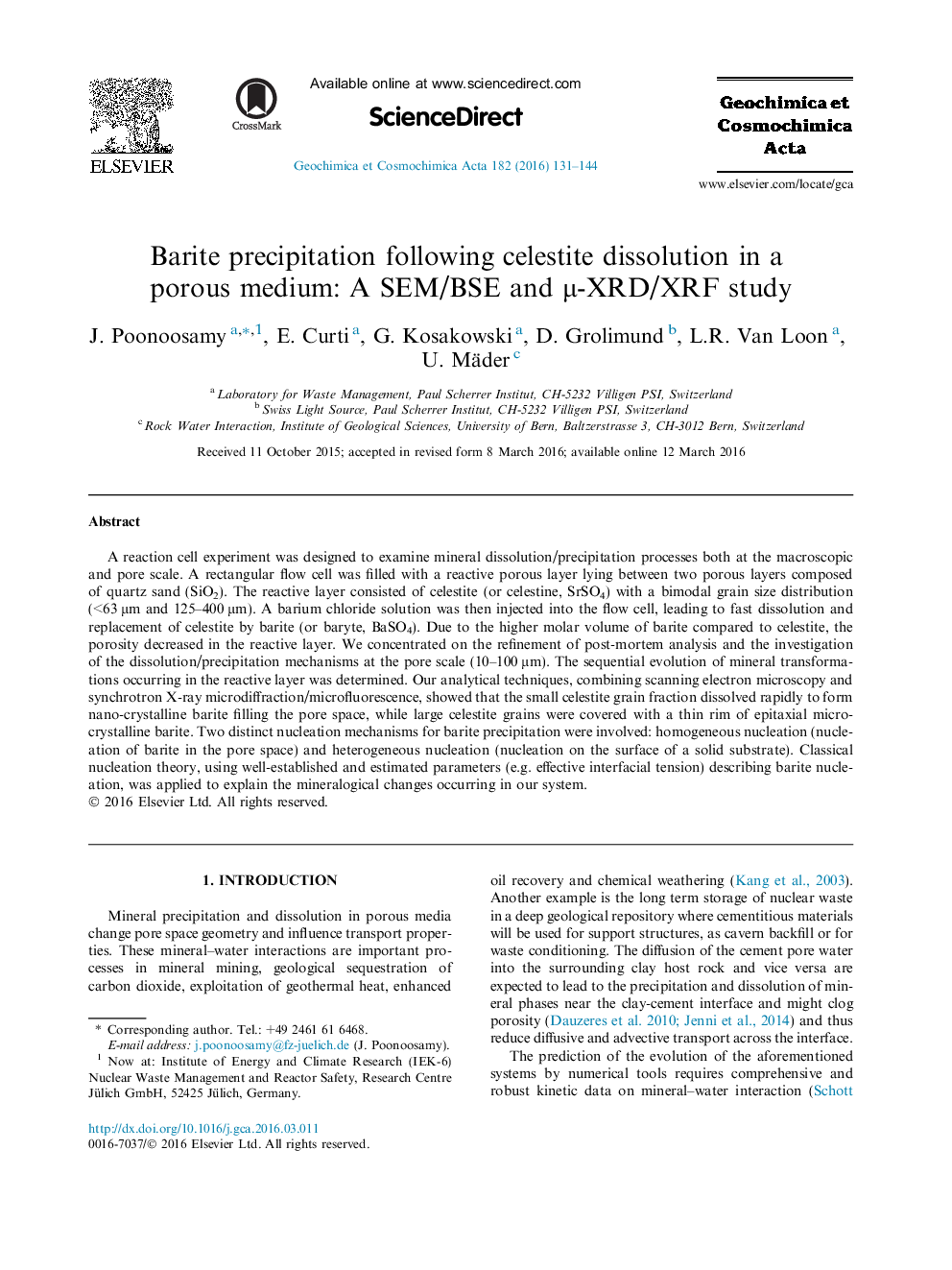| Article ID | Journal | Published Year | Pages | File Type |
|---|---|---|---|---|
| 6437435 | Geochimica et Cosmochimica Acta | 2016 | 14 Pages |
â¢SrSO4 replacement by BaSO4 was studied at the pore scale in a porous medium.â¢Spatially resolved μ-XRD data showed formation of two distinct BaSO4 generations.â¢BaSO4 was found to grow as nanocrystals in the pore and as an epitaxial rim on SrSO4.â¢The results could be partially explained using classical nucleation theory.
A reaction cell experiment was designed to examine mineral dissolution/precipitation processes both at the macroscopic and pore scale. A rectangular flow cell was filled with a reactive porous layer lying between two porous layers composed of quartz sand (SiO2). The reactive layer consisted of celestite (or celestine, SrSO4) with a bimodal grain size distribution (<63 μm and 125-400 μm). A barium chloride solution was then injected into the flow cell, leading to fast dissolution and replacement of celestite by barite (or baryte, BaSO4). Due to the higher molar volume of barite compared to celestite, the porosity decreased in the reactive layer. We concentrated on the refinement of post-mortem analysis and the investigation of the dissolution/precipitation mechanisms at the pore scale (10-100 μm). The sequential evolution of mineral transformations occurring in the reactive layer was determined. Our analytical techniques, combining scanning electron microscopy and synchrotron X-ray microdiffraction/microfluorescence, showed that the small celestite grain fraction dissolved rapidly to form nano-crystalline barite filling the pore space, while large celestite grains were covered with a thin rim of epitaxial micro-crystalline barite. Two distinct nucleation mechanisms for barite precipitation were involved: homogeneous nucleation (nucleation of barite in the pore space) and heterogeneous nucleation (nucleation on the surface of a solid substrate). Classical nucleation theory, using well-established and estimated parameters (e.g. effective interfacial tension) describing barite nucleation, was applied to explain the mineralogical changes occurring in our system.
